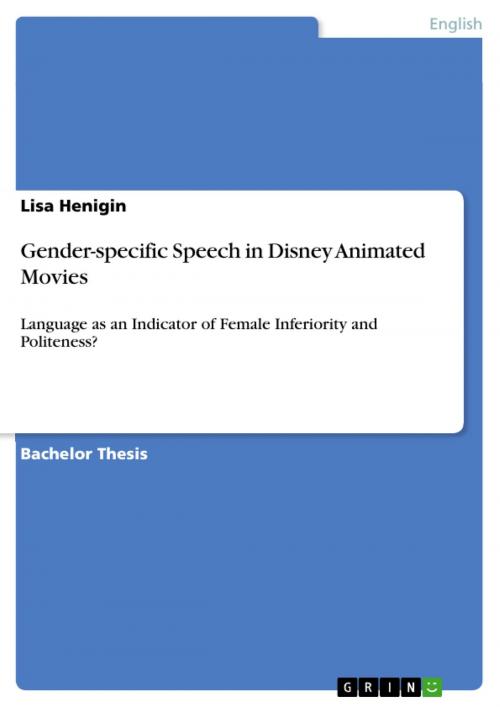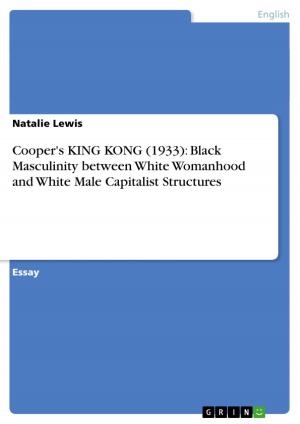Gender-specific Speech in Disney Animated Movies
Language as an Indicator of Female Inferiority and Politeness?
Nonfiction, Entertainment, Drama, Anthologies| Author: | Lisa Henigin | ISBN: | 9783668274778 |
| Publisher: | GRIN Publishing | Publication: | August 16, 2016 |
| Imprint: | GRIN Publishing | Language: | English |
| Author: | Lisa Henigin |
| ISBN: | 9783668274778 |
| Publisher: | GRIN Publishing |
| Publication: | August 16, 2016 |
| Imprint: | GRIN Publishing |
| Language: | English |
Bachelor Thesis from the year 2016 in the subject English Language and Literature Studies - Linguistics, grade: 2,3, University of Koblenz-Landau (Institut für fremdsprachliche Philologien: Anglistik), language: English, abstract: This thesis deals with the research area of gender linguistics, especially with the communicative behavior of men and women in single and mixed-gender communications. The differences in communication between genders have been addressed often in our society within the last few decades. The common misunderstandings between men and women resulting from these differences serve as the basis for many books, films and television shows. But not only is this apparent in society and entertainment media, but also in sociolinguistics, which deals with the differences between men and women more and more intensively. In this thesis I first of all want to address the term Gender and some of the existing research on gender representations in Disney movies. After that I want to touch on gender-specific speech in detail, and summarize what I found to be the most important findings. At that point I also want to talk about the highly discussed essay Language and Woman's Place, which was published in 1973 by Robin Tolmach Lakoff, a professor of linguistics at the University of California Berkley. Afterwards, I will analyze selected features, which gender linguists in previous research ascribed to female language, in reference to three well-known animated movies by Disney, namely The Little Mermaid, Finding Nemo, and Tangled.
Bachelor Thesis from the year 2016 in the subject English Language and Literature Studies - Linguistics, grade: 2,3, University of Koblenz-Landau (Institut für fremdsprachliche Philologien: Anglistik), language: English, abstract: This thesis deals with the research area of gender linguistics, especially with the communicative behavior of men and women in single and mixed-gender communications. The differences in communication between genders have been addressed often in our society within the last few decades. The common misunderstandings between men and women resulting from these differences serve as the basis for many books, films and television shows. But not only is this apparent in society and entertainment media, but also in sociolinguistics, which deals with the differences between men and women more and more intensively. In this thesis I first of all want to address the term Gender and some of the existing research on gender representations in Disney movies. After that I want to touch on gender-specific speech in detail, and summarize what I found to be the most important findings. At that point I also want to talk about the highly discussed essay Language and Woman's Place, which was published in 1973 by Robin Tolmach Lakoff, a professor of linguistics at the University of California Berkley. Afterwards, I will analyze selected features, which gender linguists in previous research ascribed to female language, in reference to three well-known animated movies by Disney, namely The Little Mermaid, Finding Nemo, and Tangled.















